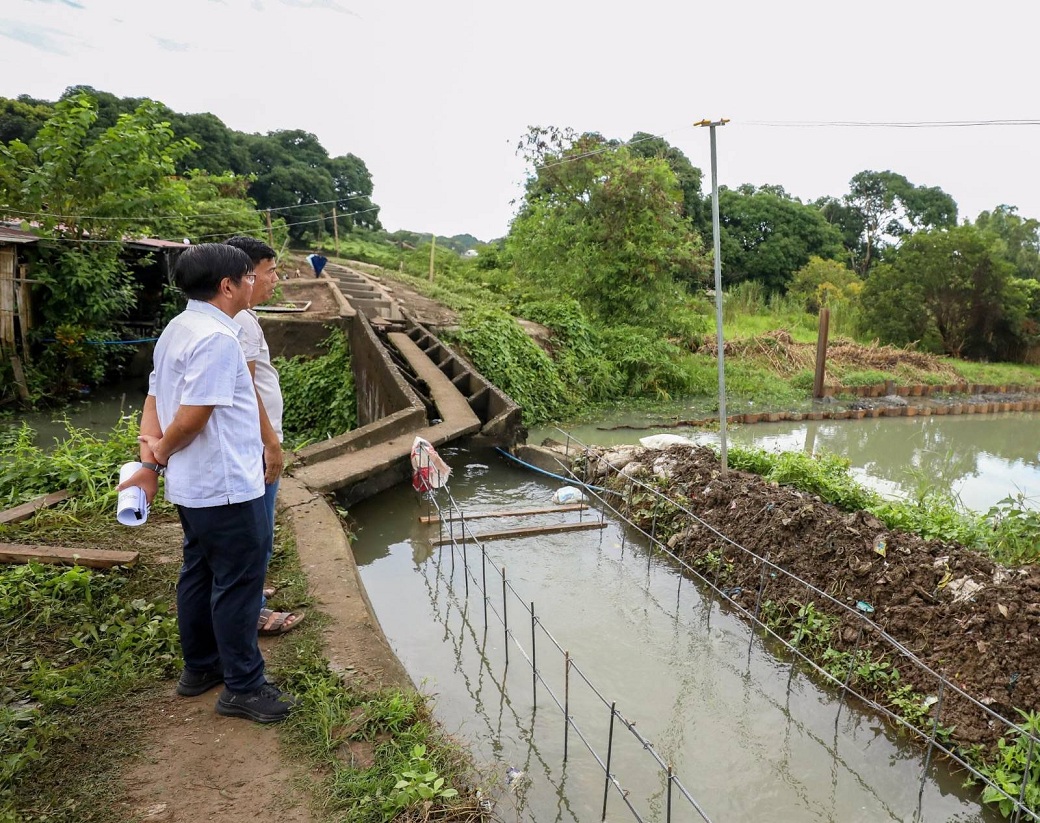President Ferdinand Marcos Jr. has all the reasons to be disappointed and be very angry after finding out firsthand that a supposedly completed and fully paid P55-million riverwall project in Baliuag, Bulacan did not even have a trace of having started.
He was deceived into believing that his administration had completed more than 5,500 flood control projects in its first two years, from July 2022 to May 2024, as he had boasted in his third State of the Nation Address in July 2024.
By a stroke of bad luck two days later, Super Typhoon Carina (international name: Typhoon Gaemi) intensified and enhanced the southwest monsoon or habagat, causing Metro Manila’s worst flooding in recent years. At the height of the widespread flooding, netizens taunted Marcos and questioned the existence of those projects, calling them “ghost projects” funded by public money.
Maria Catalina E. Cabral, the DPWH undersecretary for Planning, Public-Private Partnership and Information Management Services, confirmed the president’s statement, bragging in a news forum that apart from the 5,521 completed flood control projects, more than 5,000 others were ongoing. That was more than a year ago. Going by its supposed accomplishment rate, DPWH should have completed around 8,000 of these projects. But where exactly are those projects?
Cabral had attributed to overpopulation and overcapacity of the drainage systems the massive flooding brought by Super Typhoon Carina, not to the non-existent flood control projects. In fact, she said flooding in Metro Manila could have been worse were it not for the government’s flood control projects.
The president admitted that he had found out of the “ghost” projects “just lately,” assuring that they are now “intensively validating” them.
Last Aug. 11, the president said in a press conference that about a fifth of the P545-billion funding for flood control projects since the start of his administration went to just 15 contractors, while more than 6,000 projects did not provide specifics on the nature of the construction works they covered.
On Aug. 19, Sen. Rodante Marcoleta, chairman of the Senate blue ribbon committee, clarified during its initial inquiry that the actual budget for flood-control projects from July 2022 to May 2025 is P849 billion and that the P545 billion mentioned by Marcos referred only to the funds awarded to the top 15 contractors.
The House of Representatives will also be scrutinizing, through the Committees on Public Accounts, Public Works and Highways, and Good Government and Public Accountability, those projects involving politicians who allegedly received kickbacks, gamed the public biddings, or covertly controlled the companies that bagged the multimillion-peso government contracts.
Lawmakers should be able to disprove doubts that the inquiry would be objective in view of allegations that a number of these ghost projects were funded through the insertions of congressmen in the DPWH budget. Others said it could only serve as a platform for lawmakers to defend themselves against insinuations of corruption.
Here’s to hoping that all these investigations will end up identifying the accountable persons in and out of the government and giving them due punishment.
The investigators may want to take a look at the 2008 report of the World Bank’s Department of Institutional Integrity, a unit tasked to investigate fraud and corruption in WB-funded projects, where it was alleged that a cartel composed of private contractors and public works officials has been “institutionalized and has operated with impunity for at least a decade, possibly longer,” on account of the “systemic corruption and bid rigging” in the Philippine public works sector.
From the news reports on the fictitious flood control projects, the pattern looked similar to the WB-funded road projects through the DPWH. Part of the WB report said, “Fully 20-30% of each of these contract packages was to be diverted to corrupt payments to government officials, other cartel participants, and other individuals to cover up the cartel’s operations.”
The Senate blue ribbon committee investigated the anomalous public works projects at that time. In one hearing, Sen. Panfilo Lacson grilled a contractor on the allegation about a P70 million cash contained in a carton box that he supposedly delivered in person to then-first gentleman Mike Arroyo at the FTA Building in Makati City sometime in 2004. Lacson claimed the money was allegedly meant as a bribe in exchange for the awarding of the P1.4 billion EDSA rehabilitation project. That contractor was among those debarred by the World Bank.
When Rogelio Singson was public works secretary, he overhauled the procurement and administrative systems and procedures at the DPWH in a bid to clean up the agency, which was tagged as the most corrupt government institution in a 2009 survey by Pulse Asia.
That same year, the World Bank debarred five construction companies and two of their owners for rigging a series of biddings for bank-funded road projects.
Singson also reshuffled DPWH officials to prevent them “from being too familiar with contractors and suppliers, and to reduce the opportunities for colluding with them,” and replaced others with serious eligibility deficiencies and pending complaints or cases.
After Singson had left the DPWH, it would seem that “happy days” are back not only for both the public works officials and private contractors but also for the corrupt politicians.
The president may have to overhaul the DPWH and appoint persons of integrity and competence if he is sincere in his good governance initiatives. He should sustain his efforts in finding the truth behind these “ghost” and other anomalous projects, not only in the DPWH but also in other agencies involving procurement and other forms of contracts. That would be a meaningful legacy to leave behind.
The views in this column are those of the author and do not necessarily reflect the views of VERA Files.
This column also appeared in The Manila Times.

